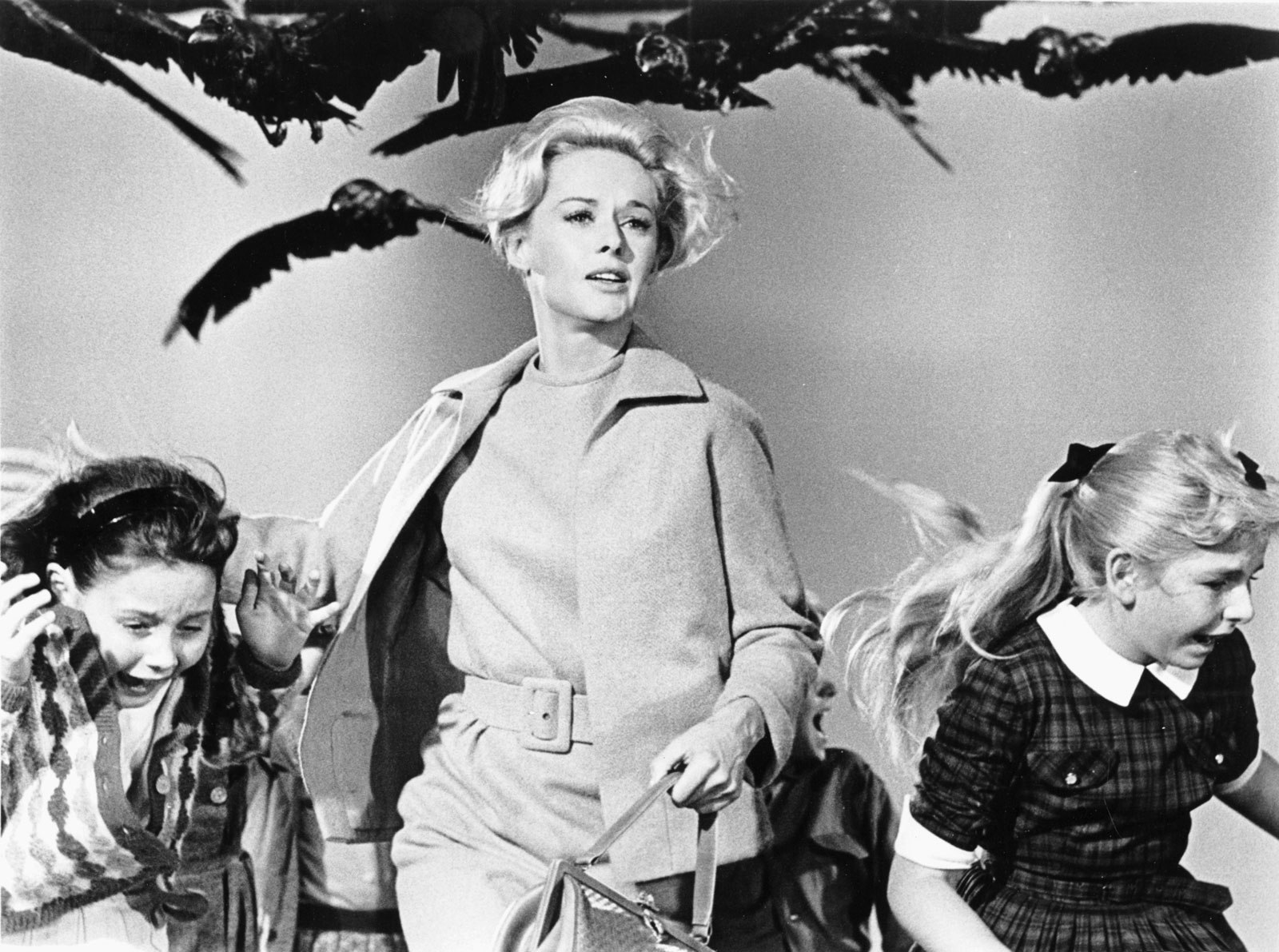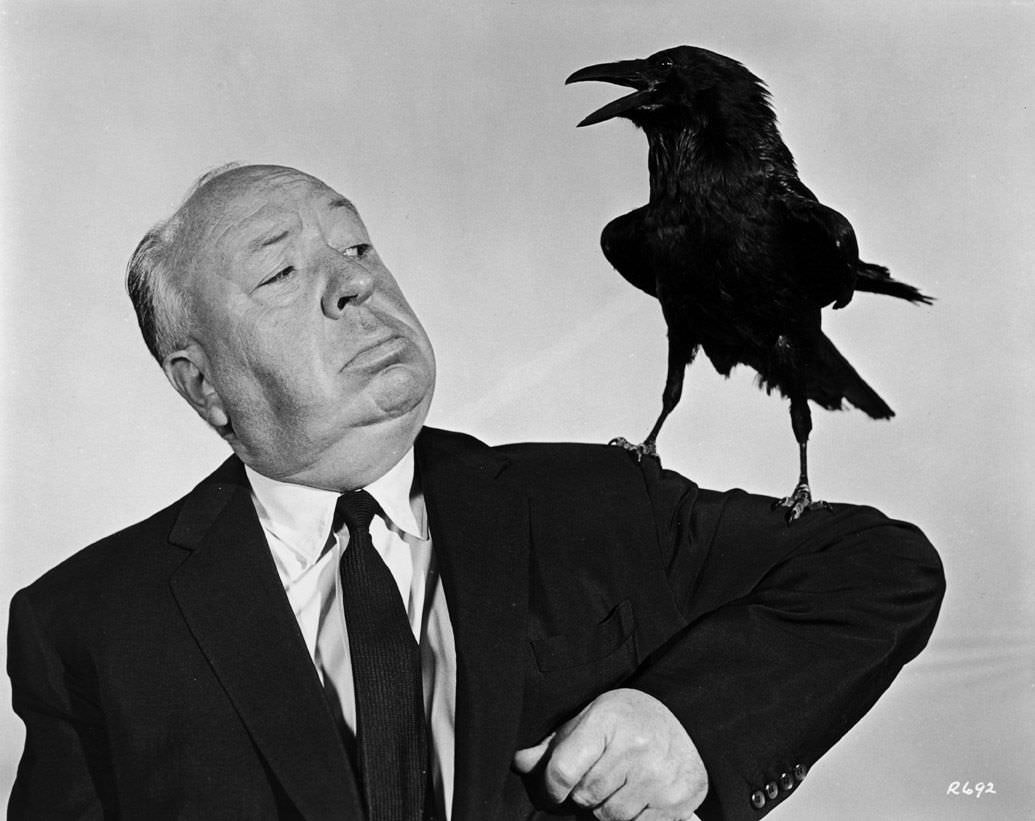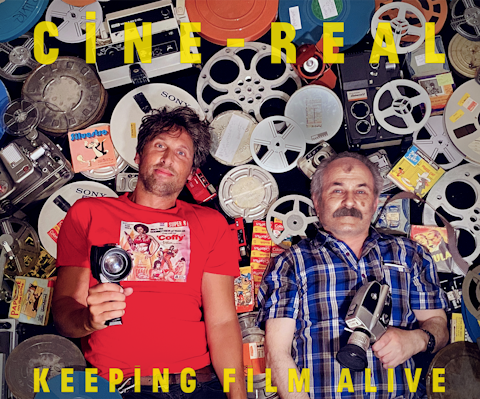THE BIRDS (1963)
THE BIRDS (1963)
Alfred Hitchcock has concocted an elaborate tease in The Birds, as if to prove that suspense and thrills can be induced as much by the expectation of horror as by horror itself. What audiences are expecting and shiveringly hoping for — after Psycho — is more of the same.Deliberately, Hitchcock prolongs his prelude to horror for more than half the film, playing with audience suspense with comedy and romance while he sets his stage. The horror, when it comes, is a hair-raiser, and audiences should take to the Universal release with satisfying response.

Based on a story by Daphne du Maurier, the Evan Hunter screenplay has for its premise an assault on the human race — or an isolated segment of it — by the birds, our feathered friends. The film starts with a sophisticated flirtation between Rod Taylor and “Tippi” Hedren in the glamor of San Francisco, then shifts to Taylor’s Northern California seaside home, a setting of quiet, pastoral beauty, for family complications.Characters and background are laid in with detail. The Birds up to the halfway mark might easily be a romantic comedy drama. The change comes when birds of all descriptions — principally, it seems, crows and sea gulls — begin to attack in flocks, the humans of the town. In the end the birds rout the humans and Hitchcock’s long, last shot (which exhibitors will probably compress) is of the birds in possession. Hitchcock and Hunter make no symbolism of their story.
Like most good horror stories it is based on a simple “what [if]” premise, with the abnormal substituted for the normal. The revolt of the birds, acting contrary to nature and their established habits, is convincingly presented. The fact that birds are the last element of nature one expects to turn on man only underlines the horror. If you can’t trust birds, who can you trust? There is only one chink in the premise.

That is the unanswered and unposed question of why nobody ever gets a gun and blasts away at the winged assault. Rod Taylor and a newcomer, Miss Hedren, play the romantic leads. Taylor is strong and convincing. Miss Hedren, a cool, blond beauty in the Hitchcock tradition, handles herself with finesse and is promising. Jessica Tandy gives an outstanding performance as Taylor’s neurotic mother. Suzanne Pleshette is strong as Taylor’s former girlfriend. Veronica Cartwright is good as Taylor’s young sister. Ethel Griffies is specially memorable as a bird authority. Doreen Lang has a good cameo she handles with force. Others helpful include Charles McGraw, Ruth McDevitt, Joe Mantell, Karl Swenson, Malcolm Atterbury, Elizabeth Wilson, Lonny Chapman, John McGovern and Richard Deacon. Robert Burks’ Technicolor photography is fine, catching the serenity soon to be shattered of the Northern California locale. His menacing shots of crows thickly clustered on a children’s playground bristle with terror.
The “musical” score, an electronic composition by Remi Gassmann and Oskar Sala, gives aural life to the visual compositions.Sets chosen or designed by Robert Boyle, with set decoration by George Milo, are greatly helpful. Sound, by Waldon O. Watson and William Russell, is good, and George Tomasini’s editing insures the cumulative tempo. Edith Head, with the problem of designing a single costume for Miss Hedren to wear throughout, has surmounted the potential monotony neatly. — James Powers, originally published on March 28, 1963.
